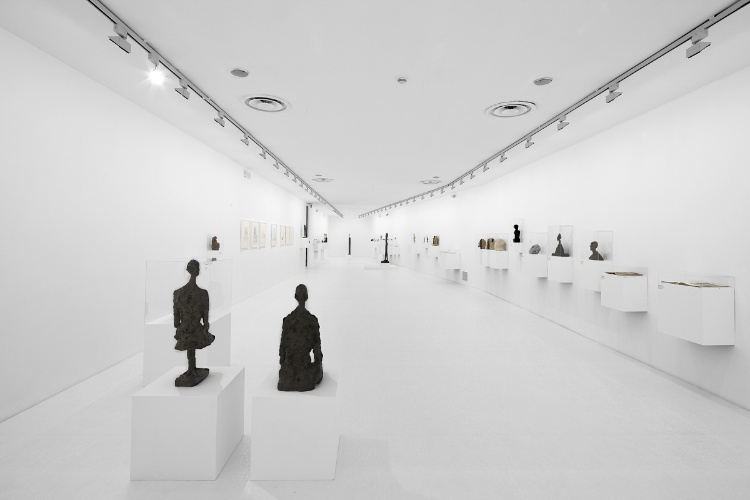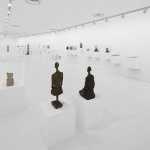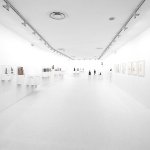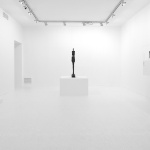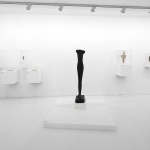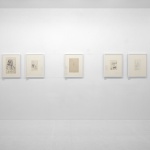
Main site sections
Resources
Alberto Giacometti
At a step away from time. Giacometti ad the archaic
24.10.2014
-
25.01.2015
Curated by Pietro Bellasi and Chiara Gatti, the exhibition presents some seventy works that will reveal to the public the fascination that the statues of ancient times (Egyptian Etruscan, Greek, Celtic and African) held in the eyes of the twentieth century master famous for his walking figures and his motionless and silent women, like idols of the past.
"All the art of the past, of all epochs, of all civilizations, appeared before me. All was simultaneous, as if space had taken the place of time". From this intense confession comes the idea of restoring to the masterpieces of Alberto Giacometti (1901-1966) their eternal dimension, placing his slender and long-limbed sculptures, sculpted into the matter like archaeological findings, side by side with a precious selection of works from the most important Italian museums of ancient art.
The loan of Giacometti's works from important Swiss collections as well as from the Kuntshaus of Zurich and the Peggy Guggenheim Collection of Venice, will be displayed for the first time together with archaic works from Cagliari's National Archaeological Museum, Bologna's Civic Archaeological Museum, the Palazzo Farnese Civic Museum of Piacenza and the Villa Giulia National Etruscan Museum.
Giacometti's works and those of his ancestors will brighten a captivating itinerary laid out by themes and iconographies, based on a play of references, of views shifting between masterpieces subtracted from the dimension of time and relocated in the space of the contemporary.
From studies carried out over the years on the points of contact between the works of Giacometti and statues of ancient times – from Egyptian to Sumerian art, from the artefacts of the Bronze Age to Greek art and African sculptures – what has emerged is the possibility of drawing up a map of iconographies of the past and the cultures most loved by the artist and taken as a model for his contemporary reflection, in the search for ancestral forms of expression capable of representing modern humans in an eternal vision, in a recapturing of our origins and history.
A enthralling journey through time (and space) will demonstrate how his Femme qui marche (Walking Woman), sculpted between 1932 and 1936, reproposes the same canons for stylizing the body, its frontality, its hieratic nature, the short step forward of the left leg, the concept of movement at its purest, inspired by Egyptian iconography. Within the ambit of art nègre, the Oko insignias and the Igala figures of Nigeria with flat, elongated bellies, are testimonials of images of the spirit, the visible form of an invisible residing within us, and which Giacometti studied in depth for his statues with minute heads and greatly elongated chests.
The famous figures of Etruscan origin, like the haruspices with "blade-shaped" bodies from the Villa Giulia Museum in Rome, discovered by the artist on his first visit to Italy between 1920 and 1921, appear to return in the immobile forms of the sculptor with which they share linearity, composure and harmony. In the same way the dialogue with the nuragic bronze figurines – which represent a bond with Sardinia – can be explained through the words that the art historian Giuseppe Marchiori dedicated to the anthropological flavour of Giacometti's works and the shape of his bodies "slender, like those of Nuragic warriors, without spears or shields, and yet similar to the Volterra idol, to the men of the night".
Proceeding by comparisons, we come finally to certain small bronze korai, with their adhering garments, arms distended along the sides, recalling the delicacy of Giacometti's slenderest figures, just a few centimetres in height, like the image of Silvio debout; while certain portraits of Diego or Annette seated can be compared to prayers in the Egyptian culture, the templar statues or the kneeling mourners, in the classic pose with open hands resting on bended knees.

